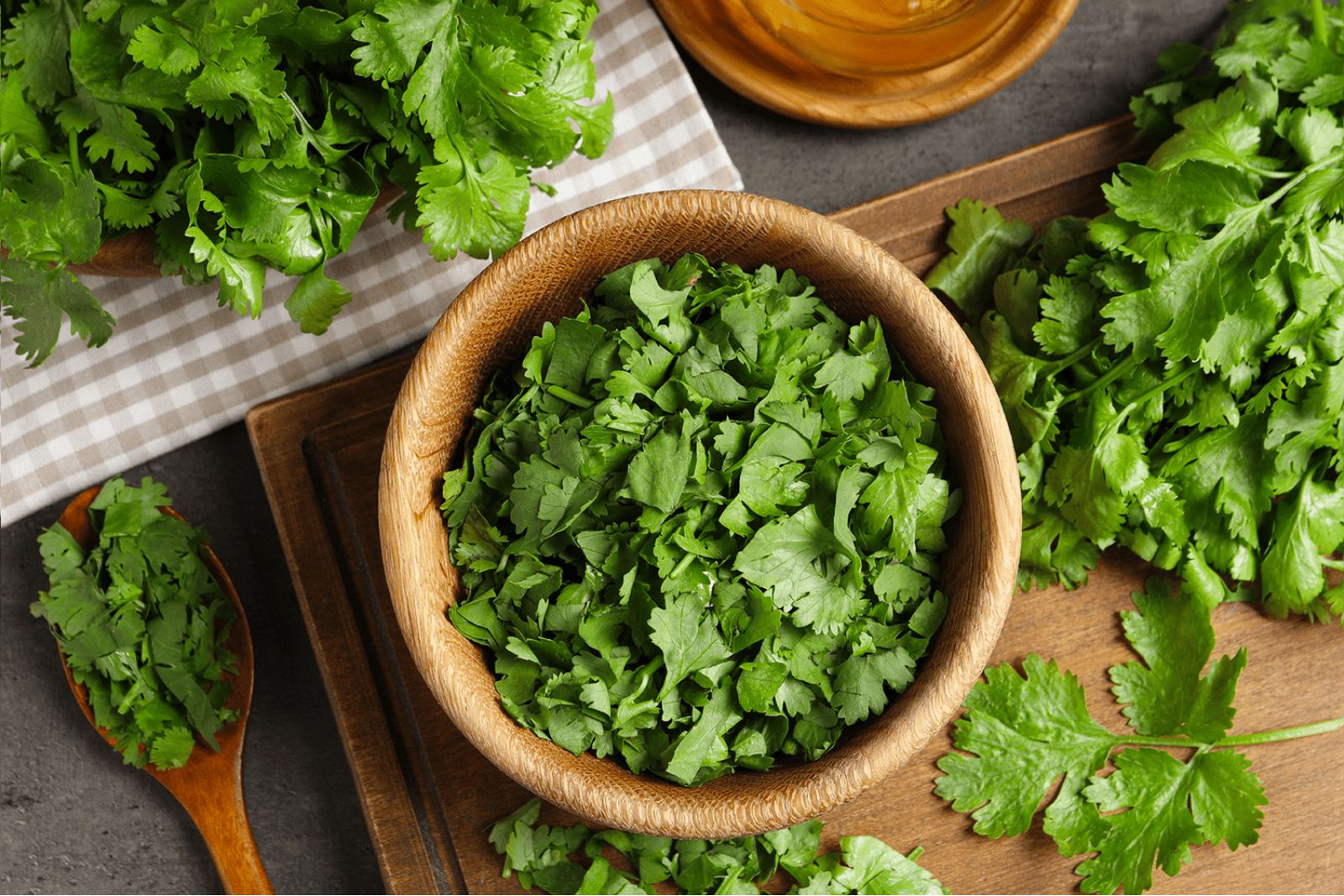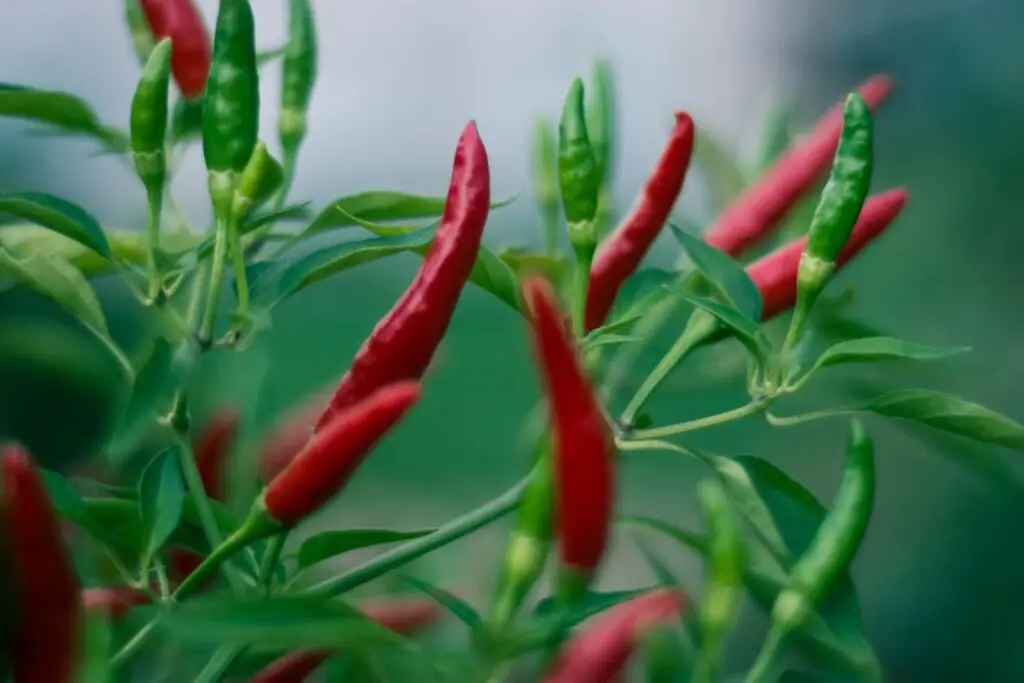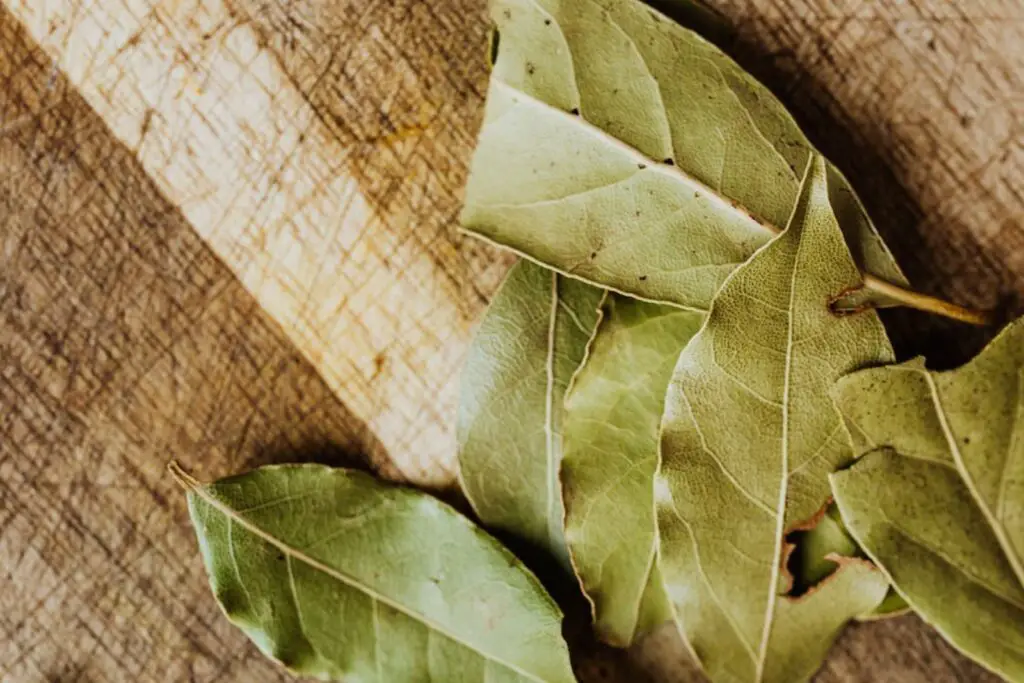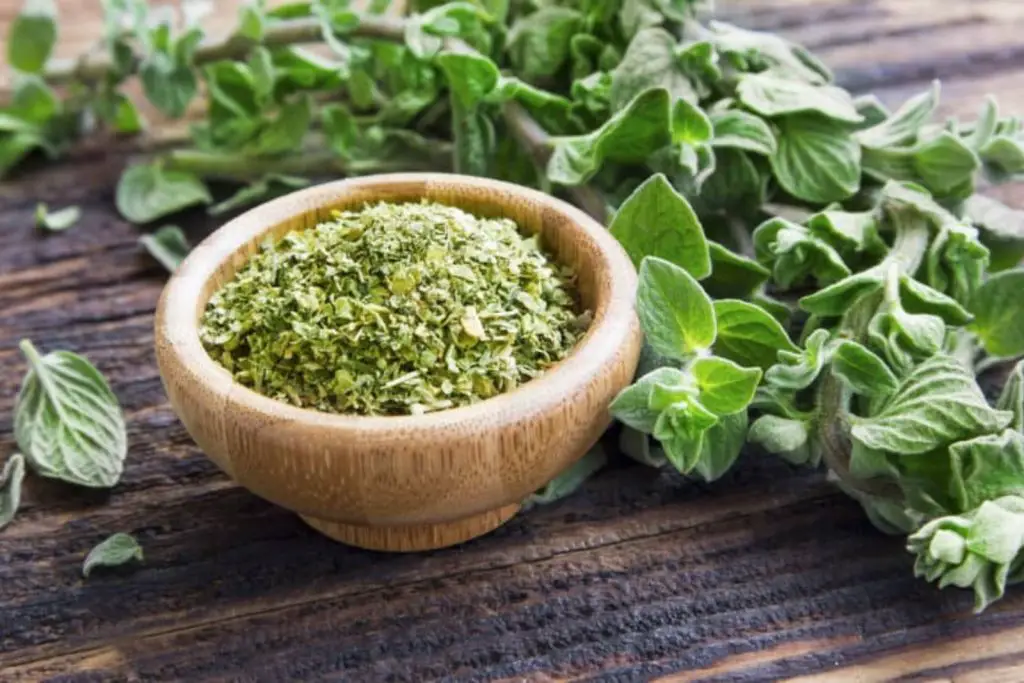
Cilantro, also known as coriander leaves, is a vibrant herb commonly used in various cuisines around the world. Its fresh and citrusy flavor adds a delightful touch to dishes like salsas, salads, and curries. If you have an abundant supply of cilantro and want to prolong its shelf life, freezing it is a great option. By freezing cilantro, you can preserve its vibrant color, aromatic fragrance, and zesty taste, allowing you to enjoy this versatile herb all year round. In the following sections, we will guide you through the steps to freeze cilantro properly, ensuring that it stays fresh and ready to enhance your culinary creations.
Here’s a step-by-step guide on how to freeze cilantro:
Step 1: Prepare the cilantro
Before freezing cilantro, it’s crucial to prepare it properly to ensure optimal quality and longevity. This step involves washing the cilantro thoroughly and ensuring it is completely dry before freezing. Here’s why this preparation is essential:
- Removing dirt and debris: Cilantro, like any fresh produce, may have dirt, sand, or other debris clinging to its leaves and stems. Washing the cilantro under cool running water helps eliminate any impurities, ensuring you freeze a clean and safe herb.
- Maintaining flavor and aroma: Washing cilantro not only removes dirt but also helps refresh the leaves and stems. This process revitalizes their natural aroma, ensuring that the frozen cilantro retains its fresh and vibrant flavor when used in future dishes.
- Preventing microbial growth: Cilantro, being an herb, can harbor bacteria or other microorganisms. Washing the cilantro helps reduce the chances of microbial growth, which can lead to spoilage or foodborne illnesses.
- Drying to prevent ice crystals: After washing the cilantro, it is crucial to thoroughly dry it. Excess moisture on the leaves and stems can lead to the formation of ice crystals during freezing. These ice crystals can affect the texture and quality of the cilantro when thawed. By ensuring the cilantro is completely dry, you minimize the risk of freezer burn and maintain the herb’s freshness.
To dry the cilantro, gently pat it dry using a paper towel or a clean kitchen towel. Allow the cilantro to air dry for a few minutes, ensuring there is no moisture remaining. This step is especially important because any residual moisture can contribute to the degradation of the cilantro’s quality during freezing.
Can I freeze cilantro without washing it first?
While it is generally recommended to wash cilantro before freezing, you can freeze it without washing it if you prefer. However, unwashed cilantro may contain dirt, debris, or pesticides, which can affect its quality during freezing. If you choose not to wash it, be sure to thoroughly wash and rinse the cilantro before using it after thawing to ensure it is clean and safe to consume.
Should I blanch the cilantro before freezing?
No, it is not necessary to blanch cilantro before freezing. Blanching is a process commonly used for preserving vegetables, but it is not required for herbs like cilantro. Blanching cilantro can result in a loss of its vibrant flavor, aroma, and texture. Freezing cilantro directly without blanching is the recommended method to maintain its freshness and taste.
Step 2: Remove excess moisture
After washing cilantro, it’s important to go a step further and remove any excess moisture before freezing. This additional drying step helps minimize the formation of ice crystals and reduces the risk of freezer burn. Here’s why removing excess moisture is crucial:
- Minimizing ice crystal formation: Moisture present on the cilantro leaves and stems can freeze during the freezing process, leading to the formation of ice crystals. These ice crystals can cause cellular damage and result in a loss of flavor, texture, and overall quality when the cilantro is thawed. By removing excess moisture, you significantly reduce the chance of ice crystal formation, ensuring the cilantro retains its fresh characteristics.
- Preventing freezer burn: Freezer burn occurs when moisture in the food evaporates and then refreezes on the surface. This can result in dry, discolored patches that affect the taste and texture of the cilantro. By eliminating excess moisture, you minimize the risk of freezer burn, preserving the integrity of the herb during its time in the freezer.
To remove excess moisture from cilantro lay it out on a clean kitchen towel or paper towel. Ensure that the leaves and stems are spread out in a single layer, allowing air to circulate around them. Let the cilantro air dry for approximately 10 to 15 minutes or until it feels dry to the touch. This drying period allows any remaining moisture to evaporate, reducing the risk of ice crystal formation during freezing.
Can I freeze cilantro in water?
Freezing cilantro in water is not recommended. Cilantro contains a high water content, and freezing it in water can result in a loss of flavor and texture. Additionally, the water can cause the cilantro to become mushy and lose its vibrant green color. It is best to freeze cilantro using dry methods, such as packing it in airtight containers or bags, to preserve its quality.
Step 3: Decide on the freezing method
When it comes to freezing cilantro, you have the option to freeze the leaves alone or freeze the leaves and stems together. The choice between these methods depends on your culinary preferences and the specific recipes you plan to use cilantro in. Here’s a breakdown of the two freezing methods:
- Freezing the leaves alone: If you primarily use cilantro as a garnish or in recipes where the stems are not required, freezing the leaves alone is a suitable method. Removing the stems can make it easier to incorporate the cilantro into dishes without any woody or fibrous texture. This method is ideal for preserving the vibrant green color and delicate flavor of the cilantro leaves.
- Freezing the leaves and stems together: If you frequently use cilantro stems for their added flavor in soups, stocks, or sauces, freezing the entire herb is recommended. Cilantro stems possess a slightly different taste profile than the leaves and can contribute a unique aroma and flavor to your culinary creations. Freezing the entire herb allows you to have both the leaves and stems readily available for recipes that benefit from their combined qualities.
To decide on the freezing method, consider the types of dishes you typically prepare and your personal preferences. If you use cilantro predominantly as a garnish or in recipes where the stems are not essential, freezing the leaves alone may be more convenient. On the other hand, if you frequently cook dishes that benefit from the flavor and aroma of cilantro stems, freezing the entire herb is the way to go.
Can I freeze cilantro stems separately from the leaves?
Yes, you can freeze cilantro stems separately from the leaves. The stems can be frozen alongside the leaves or separately based on your preference and intended use. However, keep in mind that the leaves tend to have a higher flavor concentration compared to the stems, so using both together in recipes can provide a more well-rounded cilantro flavor.
Can I freeze cilantro that has already been chopped?
Yes, you can freeze cilantro that has already been chopped. Chopping cilantro before freezing can save time and make it more convenient to use later. Ensure that the chopped cilantro is adequately packed, sealed, and labeled to prevent freezer burn and maintain its freshness.
Step 4: Pack the cilantro
Once you have decided on the freezing method for your cilantro, it’s time to pack it properly for optimal preservation. The packaging process will vary depending on whether you are freezing the leaves alone or the entire herb. Here’s a detailed explanation of each method:
Freezing the leaves alone:
- Gently pluck the leaves from the stems: Carefully separate the cilantro leaves from the stems, ensuring you remove any discolored or damaged leaves.
- Use a freezer-safe container or bag: Choose a container or resealable freezer bag specifically designed for freezing. Ensure it is clean and free of any lingering odors.
- Place the leaves in the container or bag: Transfer the cilantro leaves into the container or bag. Arrange them in a single layer, if possible, to prevent clumping.
- Remove excess air: Press out any excess air from the container or bag before sealing. This helps minimize the potential for freezer burn and maintains the cilantro’s freshness.
- Seal tightly: Ensure the container or bag is tightly sealed to create an airtight environment, preserving the quality of the cilantro during freezing.
Freezing the entire herb:
- Leave the leaves and stems intact: Keep the cilantro leaves attached to the stems. This method allows you to have both the leaves and stems available for future culinary use.
- Choose a freezer-safe container or bag: Select a container or resealable freezer bag that can accommodate the length of the cilantro stems. Make sure it is clean and suitable for freezing.
- Pack the cilantro: Place the cilantro into the container or bag, arranging the stems neatly to avoid breakage.
- Remove excess air: Like freezing the leaves alone, press out any excess air to minimize the risk of freezer burn.
- Seal tightly: Seal the container or bag securely, ensuring an airtight seal to maintain the cilantro’s quality.
Can I freeze cilantro in small portions for easy use?
Yes, freezing cilantro in small portions is a great way to have it readily available for easy use. Chop the cilantro into desired portion sizes, such as tablespoon or teaspoon measurements, and place them in small freezer-safe containers or bags. This allows you to conveniently grab the desired amount of cilantro from the freezer without thawing more than needed and helps minimize waste.
Can I freeze cilantro in bunches without separating the leaves and stems?
It is not recommended to freeze cilantro in bunches without separating the leaves and stems. Freezing cilantro as a whole bunch can lead to uneven freezing and make it difficult to portion or use later. By separating the leaves and stems before freezing, you ensure better preservation and flexibility in using the cilantro in different recipes.
Can I freeze cilantro in ice cube trays?
Yes, freezing cilantro in ice cube trays is a popular method for preserving it. To do this, finely chop the cilantro and place it into the compartments of an ice cube tray. Fill each compartment with water or olive oil and freeze. Once frozen, transfer the cilantro cubes to a freezer-safe container or bag for convenient portioning and use in recipes.
Step 5: Label and date the package
Labeling and dating the package is a crucial step when freezing cilantro to maintain organization and ensure the cilantro remains fresh over time. Here’s why this step is essential:
- Easy identification: By labeling the container or bag that holds the frozen cilantro, you can easily identify it in your freezer. This becomes especially helpful when you have multiple items stored, as it saves you the time and effort of searching through various packages to find the cilantro you need.
- Rotation system: Adding the date of freezing to the label allows you to establish a rotation system. As time passes, you can use the oldest cilantro first, ensuring that none of it goes to waste. This practice helps maintain a constant supply of fresh cilantro and avoids any potential spoilage from prolonged storage.
- Freshness monitoring: With the date clearly marked on the package, you can keep track of how long the cilantro has been in the freezer. Cilantro is best used within a certain timeframe to preserve its flavor and quality. By knowing the date of freezing, you can assess the freshness of the cilantro and determine if it’s still suitable for your culinary needs.
To label the package, use a permanent marker to write the date of freezing directly on the container or bag. Alternatively, you can attach a label to the package and write the date on it. Whichever method you choose, ensure the labeling is clear and easily visible.
Step 6: Place the cilantro in the freezer
After properly packing and labeling your cilantro, the final step is to place it in the freezer for long-term storage. Here’s how to do it effectively:
- Find a suitable spot: Look for a section in your freezer where the cilantro containers or bags won’t get crushed or damaged. Avoid placing them near items that emit strong odors, as cilantro can absorb odors easily.
- Lay containers or bags flat: If you’re using containers, lay them flat in the freezer. This allows for efficient use of space and prevents the cilantro from becoming compacted or crushed. By keeping the containers flat, you also minimize the risk of leaks or spills.
- Stack bags neatly (optional): If you’re using resealable freezer bags, you can stack them neatly on top of each other. Make sure they are sealed tightly to prevent air exposure and maintain the quality of the cilantro. Neat stacking helps maximize freezer space and keeps your freezer organized.
- Maintain proper temperature: Ensure that your freezer is set at a consistent temperature of 0°F (-18°C) or below. This low temperature helps preserve the cilantro’s flavor, color, and texture for an extended period.
Remember to avoid frequently opening the freezer door unnecessarily, as this can cause temperature fluctuations and potentially compromise the cilantro’s quality. With proper storage in the freezer, your cilantro can stay fresh and flavorful for several months, allowing you to enjoy its vibrant taste in your dishes even when it’s out of season.
Other related questions
How do I thaw cilantro?
To thaw the cilantro, remove the desired amount from the freezer and transfer it to the refrigerator. Allow the cilantro to thaw slowly in the refrigerator overnight or for several hours. This gradual thawing process helps retain the herb’s flavor and texture. Once thawed, use the cilantro immediately or store it in an airtight container in the refrigerator for up to a week. Avoid refreezing thawed cilantro, as it can lead to a loss of quality.
How long can I store frozen cilantro?
You can store frozen cilantro for up to 6 to 12 months. However, for optimal flavor and quality, it is recommended to use it within the first 3 to 6 months. Over time, the flavor and aroma of the cilantro may gradually diminish. Proper packaging, labeling, and storage at a consistent temperature of 0°F (-18°C) or below are essential to maintain its freshness during the storage period. Regularly check the frozen cilantro for any signs of freezer burn or deterioration before use.
Can I refreeze previously thawed cilantro?
It is generally not recommended to refreeze previously thawed cilantro. Once cilantro has been thawed, it undergoes changes in texture and moisture content that can impact its quality. Refreezing cilantro can further degrade its flavor, aroma, and texture, resulting in a diminished culinary experience. It is best to use thawed cilantro immediately or store it in the refrigerator for a short period rather than attempting to refreeze it. To minimize waste, consider thawing and using cilantro in portions that align with your intended recipes.
How do I know if my frozen cilantro has gone bad?
To determine if frozen cilantro has gone bad, examine its appearance, smell, and texture. If the cilantro has developed a dark or off-color, significant freezer burn, or ice crystals, it may have deteriorated. Additionally, a foul or unpleasant odor is a clear indication of spoilage. Lastly, if the cilantro feels mushy or slimy to the touch, it is best to discard it as it has likely lost its quality. Trust your senses and err on the side of caution when in doubt about the condition of frozen cilantro.
Can I use frozen cilantro with the fresh ones?
Yes, you can use frozen cilantro alongside fresh cilantro in your recipes. Combining the two can provide a balance of flavors and enhance the overall taste of your dishes. Frozen cilantro can be added during cooking or thawed and used as a garnish. However, keep in mind that frozen cilantro may have a slightly softer texture compared to fresh cilantro. Adjust the quantities accordingly based on your personal preference and the desired intensity of cilantro flavor in your dishes.
Can I freeze cilantro paste or puree?
Yes, you can freeze cilantro paste or puree for future use. To freeze cilantro paste or puree, portion it into ice cube trays or small containers and place them in the freezer. Once frozen, transfer the cubes or portions to a freezer-safe bag or container for long-term storage. This allows you to conveniently thaw and use the desired amount of cilantro paste or puree as needed.
Can I freeze cilantro for longer than three months?
While the optimal storage time for frozen cilantro is generally recommended to be within three months, it is possible to freeze cilantro for longer periods. However, extended freezing can lead to a gradual loss of flavor, aroma, and texture. To maintain the best quality, it is advisable to use frozen cilantro within the first three months, but if properly stored, it can still be safe to consume beyond that timeframe.
Can I freeze cilantro in olive oil?
While it is possible to freeze cilantro in olive oil, it is not recommended for long-term storage. Freezing cilantro in olive oil can alter its texture and flavor. Additionally, freezing herbs in oil increases the risk of botulism due to the anaerobic environment created by the oil. It is safer to freeze cilantro using dry methods, such as packing it in airtight containers or bags, and add olive oil when using the thawed cilantro in your recipes.








